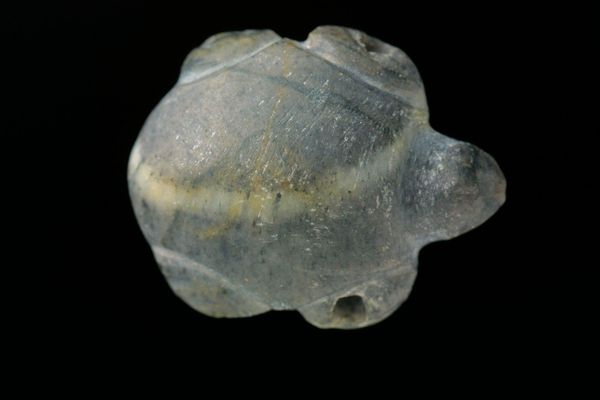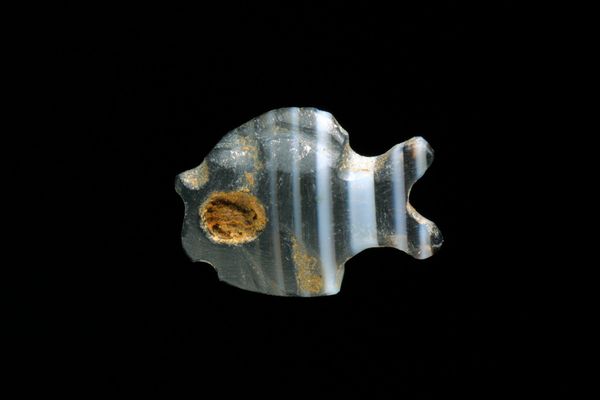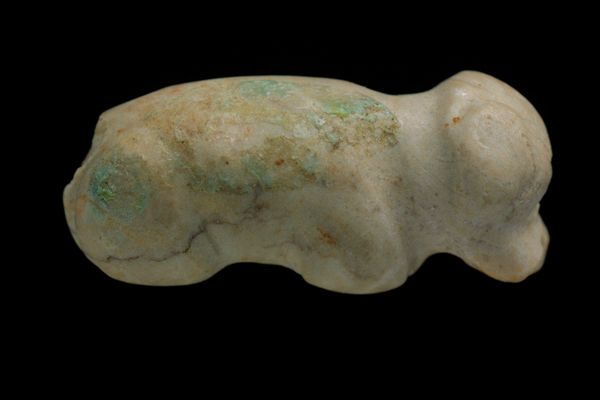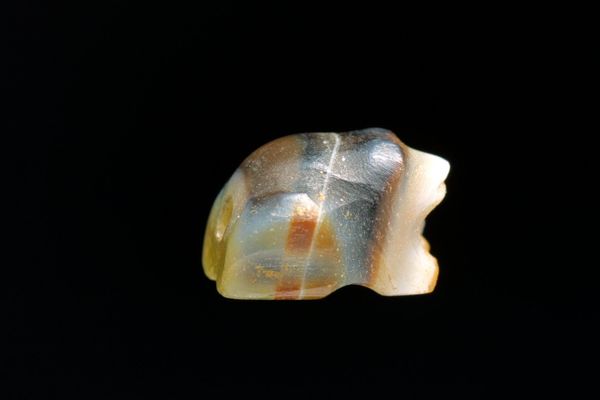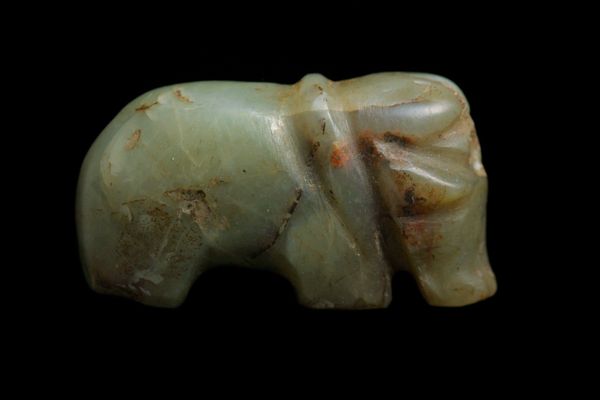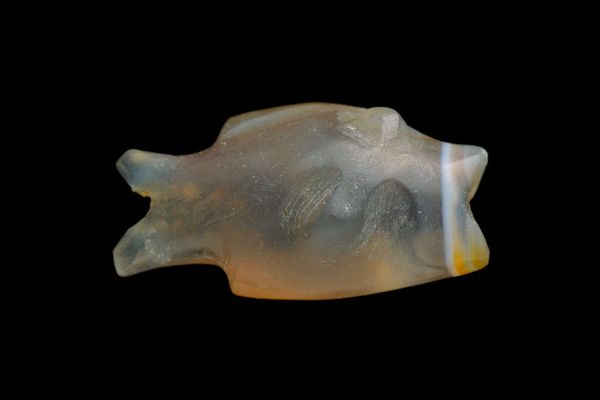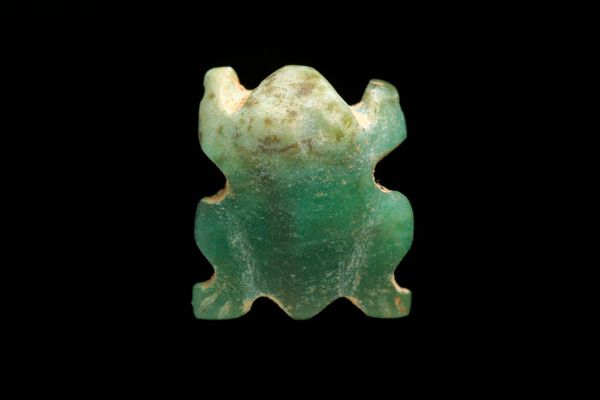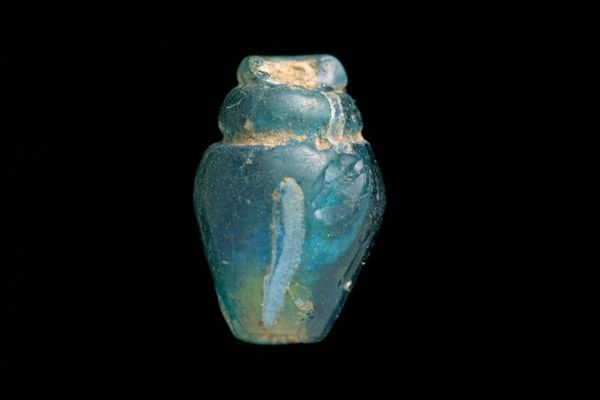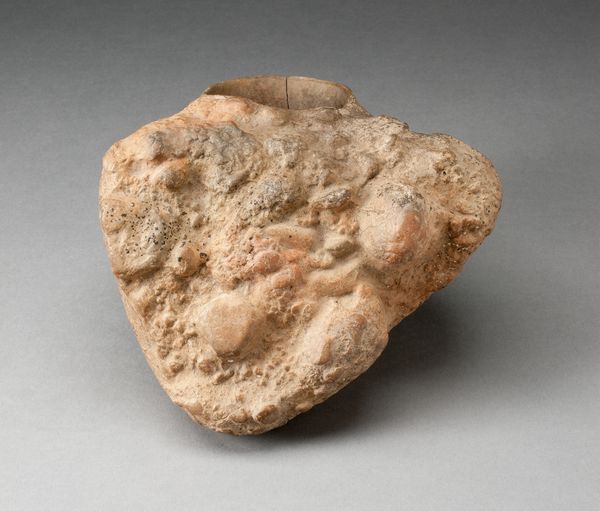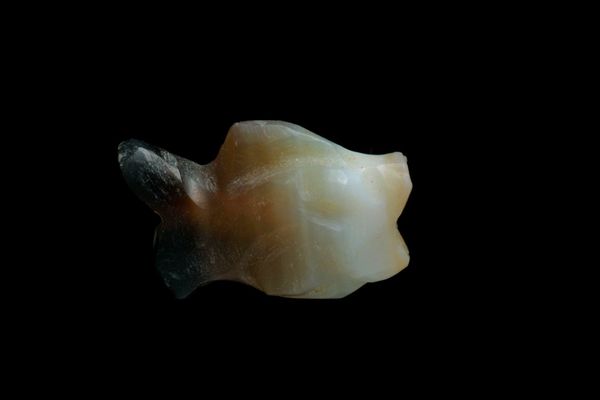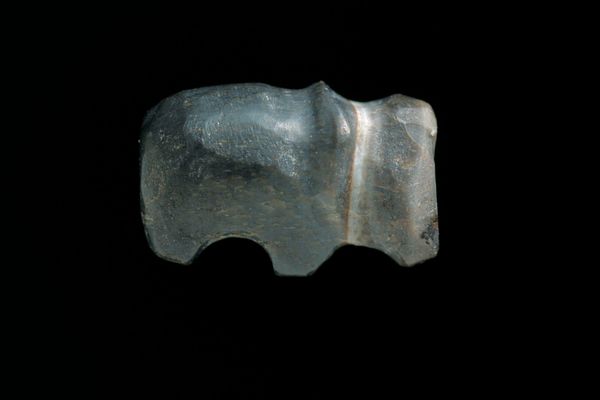
carving, sculpture
#
carving
#
animal
#
stone
#
sculpture
#
asian-art
#
figuration
#
ancient-mediterranean
#
sculpture
Dimensions: 1/4 x 5/8 x 1/2 in. (0.6 x 1.6 x 1.3 cm)
Copyright: Public Domain
Editor: This is an intriguing little sculpture. It’s an ancient bead, carved around 501-800, in the shape of a tortoise. What strikes me is the way the hard stone suggests the protective shell, yet there's also a vulnerability implied in its small size. What do you see in this piece? Curator: I see a potent symbol of resilience. Tortoises, across many cultures, embody longevity, wisdom, and perseverance. But thinking about this as a *bead* changes the reading for me. It suggests adornment, something carried close to the body. Consider the potential wearer: what social status, gender or belief system did they embody? What power did the image of the tortoise give them? Editor: That’s interesting. So it’s not just about the inherent symbolism of the tortoise, but about how it functions as a wearable object. Curator: Precisely! Its value isn’t merely aesthetic. As an adornment it speaks to larger power dynamics at play. Its size makes me wonder too: was it meant to be a visible statement, or a more private emblem of identity? Editor: A private emblem... So, understanding its meaning is really about reconstructing the world of the person who wore it? Curator: Absolutely. And challenging assumptions around cultural values is also relevant. For instance, why a tortoise and not another animal, and how might it play into trade routes? Every detail gives us a pathway into understanding this object's political and social life. Editor: That’s fascinating. I'll never look at ancient jewelry the same way again! Curator: The goal is to look beyond the immediate object. Question whose stories are elevated through history, and explore those left untold.
Comments
No comments
Be the first to comment and join the conversation on the ultimate creative platform.
